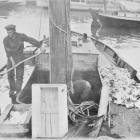While nowadays, much is written about the non-sustainability of the contemporary Baltic Sea herring (Clupea harengus) and cod (Gadus morhua) fisheries, few know about the flatfish fishery of the interwar period, that stimulated the development of an offshore fishery while also being one of the earliest recorded examples of overfishing in the Baltic Sea Region.
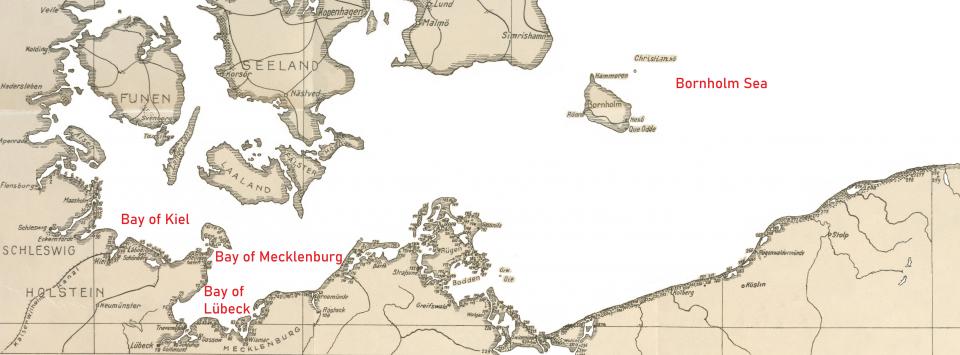
Overview map of the southern Baltic Sea Region from 1929.
Overview map of the southern Baltic Sea Region from 1929.
Unknown cartographer, 1929.
Crop of a map originally published in Hermann Henking, Die Ostseefischerei (Stuttgart: Schweizerbart’sche Verlagsbuchhandlung, 1929).
© Schweizerbart. www.schweizerbart.de/130005003
Used by permission
The copyright holder reserves, or holds for their own use, all the rights provided by copyright law, such as distribution, performance, and creation of derivative works.
After the foundation of the German Empire in 1871, efforts were made to develop its offshore fishery. The expansion of the railway network created the prerequisite to convey the fish from the coast to the growing population centers inland. The other aspect was increasing the catches and enhancing vessels and gear. While the German fishing ports at the North Sea coast could at least look back on a tradition of offshore fishery with bigger vessels, the Baltic fishery still relied on open boats and was therefore restricted to an inshore fishery. Only through the state-sponsored introduction of seaworthy boat types following Scandinavian examples, it became possible to fish beyond the relative safety of coastal waters. These decked boats were used primarily to go after herring and salmon (Salmo salar) with driftnets. But the real breakthrough came around 1910 with the introduction of the otter trawl and the first reliable boat engines. Subsequently, a new generation of bigger boats—cutters—were built with the main purpose of exploiting flatfish populations that could have hardly been reached prior to these technical innovations. The number of German-flagged cutters reached a peak at roughly 750 boats (crewed by two to three fishermen each) by the end of the 1920s. The yield of flatfish increased from about 7,500 tonnes in 1911 to nearly 13,000 tonnes in 1928. Although, at first glance, that seems like a success story, on a closer look this development had its drawbacks.
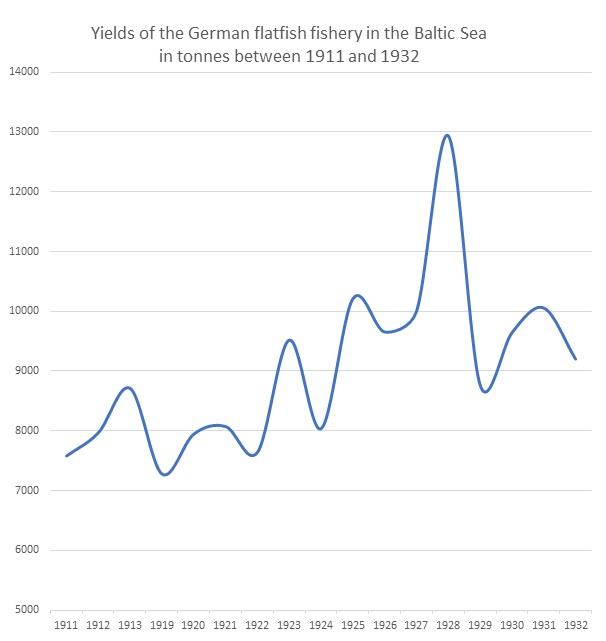
The trend seems to be positive, but simultaneously the fishing effort had to be increased immensely to obtain this result.
The trend seems to be positive, but simultaneously the fishing effort had to be increased immensely to obtain this result.
© 2021 Markus Röhrbein
The copyright holder reserves, or holds for their own use, all the rights provided by copyright law, such as distribution, performance, and creation of derivative works.
During the First World War, the Baltic fishery became important for supplying the starving German population with protein. Especially the fishery of flatfish off the coast of the province of Schleswig-Holstein was carried out with increased effort during the whole war because the area was protected against enemy action. Even navy ships were used for fishing. At this time, little attention was paid to conservation issues like the spawning season or minimum sizes of fish.
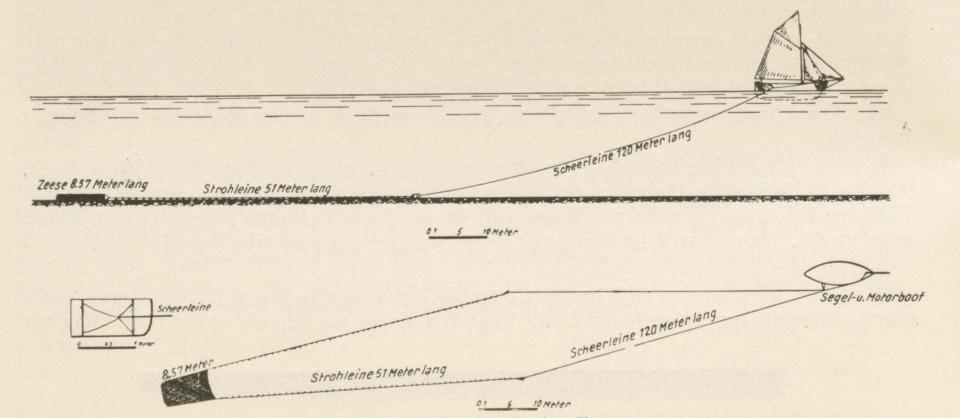
The otter trawl is a sack-shaped net, that is dragged over the ground by the fishing vessel to catch bottom-dwelling fish like flatfish.
The otter trawl is a sack-shaped net, that is dragged over the ground by the fishing vessel to catch bottom-dwelling fish like flatfish.
Unknown artist, c. 1929.
Originally published in Hermann Henking, Die Ostseefischerei (Stuttgart: Schweizerbart’sche Verlagsbuchhandlung, 1929: 140).
© Schweizerbart. www.schweizerbart.de/130005003
Used by permission
The copyright holder reserves, or holds for their own use, all the rights provided by copyright law, such as distribution, performance, and creation of derivative works.
After the war had ended, the catches remained high for a while. But the optimism vanished quickly, as catches of plaice (Pleuronectes platessa), which was the main target species, in the Bay of Kiel, the Bay of Lübeck, and the Bay of Mecklenburg plummeted in 1920–1921. In response, fishermen started to bring more flounder (Platichthys flesus) to shore, while dab (Limanda limanda) was still often cast back due to the low demand for that fish. But when flounder catches crashed as well soon after, it presented fishermen from Schleswig-Holstein with a serious problem. All their money was invested in their boats and otter trawls, which made it impossible for most of them to fall back on another fishing method—they relied on the continuance of the flatfish fishery. As a result, each year, more and more fishermen had to sail further from land and further to the east in order to find unspent fishing grounds.
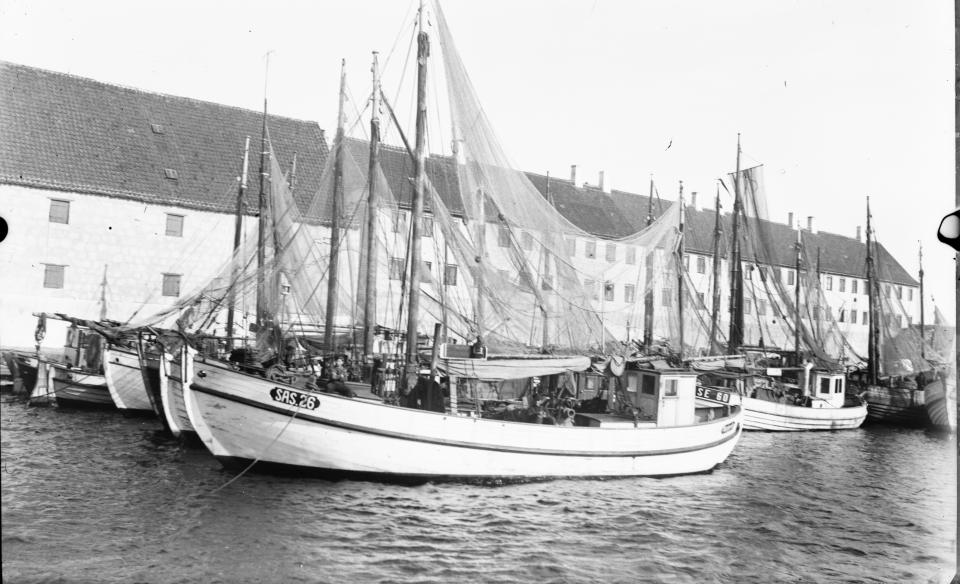
A German cutter moored among other boats in Christiansø harbor. Christiansø was used by Danish, Swedish, and German fishermen as a base for their fishing operations in the Bornholm Sea.
A German cutter moored among other boats in Christiansø harbor. Christiansø was used by Danish, Swedish, and German fishermen as a base for their fishing operations in the Bornholm Sea.
Unknown photograph, n.d.
Courtesy of Ulrich Rink.
Used by permission
The copyright holder reserves, or holds for their own use, all the rights provided by copyright law, such as distribution, performance, and creation of derivative works.
From 1925 onward, most of the German Baltic cutter fleet convened in the Bornholm Sea. This area east of Bornholm, where the plaice “lay as tightly as the cobblestones on the market square of Rønne” as one contemporary put it, had been fished by Swedish and Danish boats for some years already. The deep waters of the Bornholm Basin are the nursery of the flatfish whereto they migrate to spawn every winter. The fish caught there were either full of roe and meager, and thus of low value, or young fish that could have been caught full-grown closer to shore a few years later. Absurdly, this low-value fish was so abundant that it compensated for other failing fishing grounds in terms of quantity. That’s why the total catches of flatfish in the southern Baltic Sea peaked in 1928. But the yields dropped drastically the years after that.
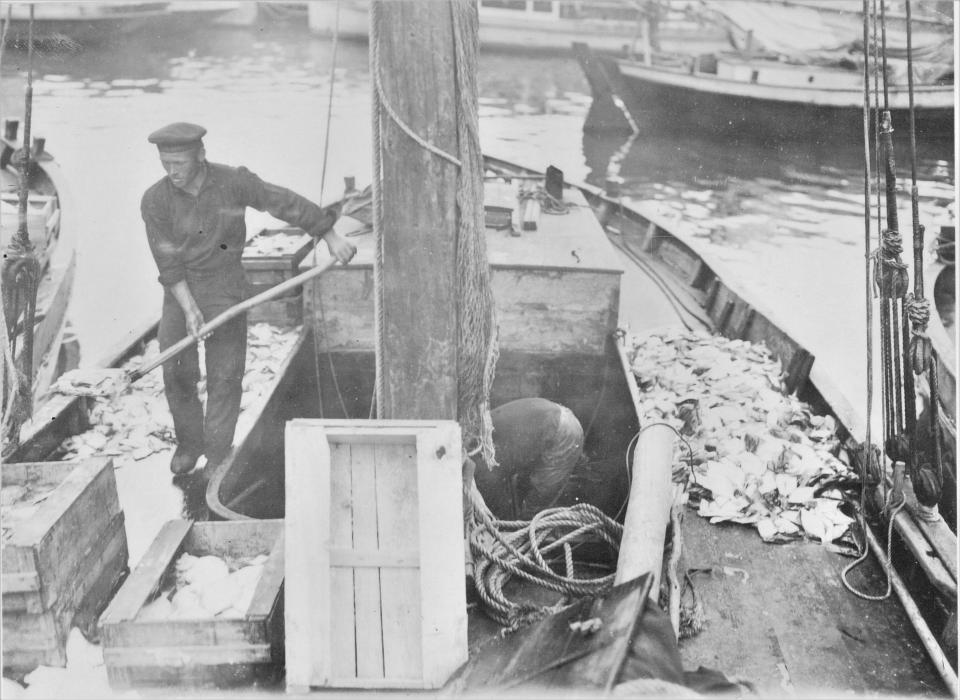
A catch of small flatfish is unloaded in Sassnitz on the island of Rügen, probably in the early twenties.
A catch of small flatfish is unloaded in Sassnitz on the island of Rügen, probably in the early twenties.
Unknown photographer, early 1920s.
Courtesy of Stadtarchiv Sassnitz.
Used by permission
The copyright holder reserves, or holds for their own use, all the rights provided by copyright law, such as distribution, performance, and creation of derivative works.
The problem was recognized and discussed vividly in contemporary journals. Germany and Denmark even adopted creative measures like transplanting plaice from the North Sea to the Baltic Sea. Finally, Germany, Denmark, Sweden, Poland, and Gdansk agreed on closed seasons and minimum sizes for plaice and flounder in 1930. Eventually, change was brought about by a new kind of trawl, that was designed to catch cod, herring, and sprat (Sprattus sprattus) and thus presented an alternative to the flatfish fishery.
The outlined story is a paragon for the “tragedy of the commons” as illustrated in the eponymous article by Garrett Hardin. Because the fishermen were competing with one another over the finite stocks of flatfish and no regulations were in place, the individual fisherman couldn’t afford to hold back, which led to mass landings, consequently low prices and also the collapse of fishing grounds on a regular basis. Which incidentally shows, that even fishing vessels and nets, that would be called primitive and small by today’s standards, can have a distinct impact on fish stocks. As a consequence, the fishermen had to sail further from their home ports, take greater risks, and live under pitiful conditions aboard their boats while being separated from their families. At the same time, the higher operating costs had to be covered by bigger catches—a vicious circle.
How to cite
Röhrbein, Markus. “Rise and Fall of the Baltic Sea Flatfish Fishery in the Interwar Period.” Environment & Society Portal, Arcadia (Summer 2021), no. 25. Rachel Carson Center for Environment and Society. doi:10.5282/rcc/9322.
ISSN 2199-3408
Environment & Society Portal, Arcadia
 This work is licensed under a Creative Commons Attribution 4.0 International License.
This work is licensed under a Creative Commons Attribution 4.0 International License.
2021 Markus Röhrbein
This refers only to the text and does not include any image rights.
Please click on the images to view their individual rights status.
- Hardin, Garrett. “The Tragedy of the Commons.” Science 162, no. 3859 (1968): 1243–48. doi:10.1126/science.162.3859.1243.
- Heidrich, Herbert. “Die Bedeutung der Scholle für die Plattfischfischerei in der mittleren Ostsee.” Berichte der Deutschen Wissenschaftlichen Kommission für Meeresforschung 2, no. 3 (1926): 165–212.
- Henking, Hermann. “Der Zustand der Schollenfischerei in der Kieler Bucht während der Jahre 1909–1930.” Zeitschrift für Fischerei und deren Hilfswissenschaften 30, no. 1 (1932): 1–98.
- Henking, Hermann. Die Ostseefischerei. Stuttgart: Schweizerbart’sche Verlagsbuchhandlung, 1929.
- Neubaur, R., and P. Volz. “Die Schollenfischerei an der schleswig-holsteinischen Ostseeküste.” Zeitschrift für Fischerei und deren Hilfswissenschaften 27, no. 4 (1929): 561–89.
- Rabbel, Jürgen. “Der Niedergang der Ostseefischerei in der Zwischenkriegszeit.” Deutsches Schiffahrtsarchiv 30 (2007): 141–90.
- Raillard, Susanne. Die See- und Küstenfischerei Mecklenburgs und Vorpommerns 1918 bis 1960: Traditionelles Gewerbe unter ökonomischem und politischem Wandlungsdruck. München: Oldenbourg, 2012.



